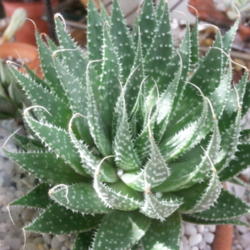DavidR said:
As a hybridizer, the main objection is crested and bearded are not mutually exclusive. The two said forms do not just go back and forth with looks in f1,f2,etc. You can combine the two, but that doesnt mean they are the same.
Can you elaborate, I'm not sure I understand what you mean? "Bearded" under AHS terminology would, I believe, be "surface cristate" whereas what people often call "crested" would be midrib cristate. So they can already be split into two different types under current AHS terminology.
DavidR said:
Some act as though the police are going to knock on their door if the say bearded. Bearded daylilies was never referenced to hairs. Bearded aloe, bearded dragon, bearded grasses are all commonly referred to dispite not having hairs.
The only reason the explanation of what bearded means in botany keeps coming up is because the use of two names for the same thing is confusing to people just getting into this kind of daylily. They go to look up daylilies using the search term "bearded" in the AHS Registry or NGA database and catalogues, for example, and find none are registered as such. They need to know that in AHS the official term is cristate so that they can find them.
So then the question is why does AHS not recognize "bearded", hence the explanation about its meaning hairs (or sometimes awns) in botany. Mr. Best's plants clearly do not have hairs or awns.
I don't understand your sentence "Bearded daylilies was never referenced to hairs", could you explain what you mean? The choice of terminology for different types of daylilies is the AHS's responsibility. The only person who has made a fuss about terminology is Mr. Best himself.
In a sense this seems to be going against his own interests because of the confusion being caused to potential interested parties/purchasers by having two terms for the same thing.
Of the examples you gave, perhaps you could explain what these examples are meant to convey? Bearded aloe, Aloe aristata, has awns at the tips, hence the specific epithet aristata (which means having an awn or bristle at the tip), bearded grasses also have awns. An awn in my botanical terminology text is defined as "a narrow, bristlelike appendage, usually at the tip or dorsal surface". The AHS has always included in the Daylily Dictionary that having an awn/awns can be referred to as "bearded" and that neither apply to daylilies. You can clearly see the tip awns on this picture of Aloe aristata.
What is a "bearded dragon"? I'm only familiar with the reptile and a Google search did not turn up any plants. Herpetological terminology is not relevant to plants, the AHS abides by standard botanical terminology.
